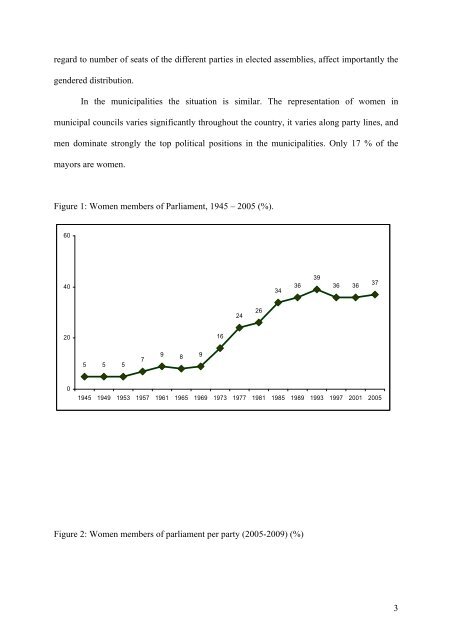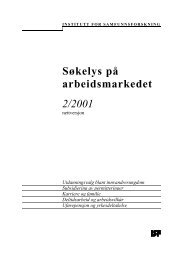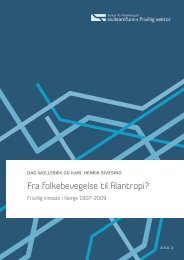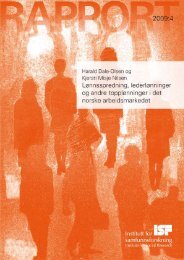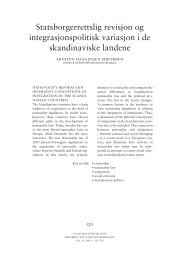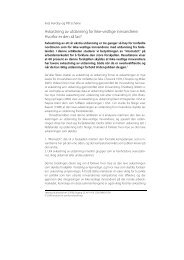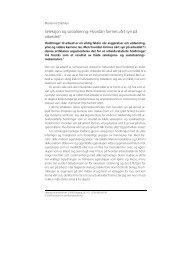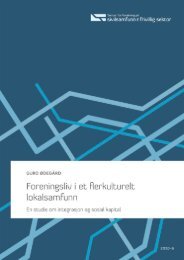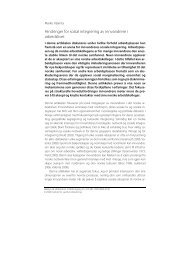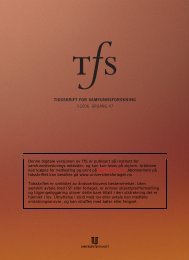Women in decision-making: The Norwegian Paradox
Women in decision-making: The Norwegian Paradox
Women in decision-making: The Norwegian Paradox
You also want an ePaper? Increase the reach of your titles
YUMPU automatically turns print PDFs into web optimized ePapers that Google loves.
egard to number of seats of the different parties <strong>in</strong> elected assemblies, affect importantly the<br />
gendered distribution.<br />
In the municipalities the situation is similar. <strong>The</strong> representation of women <strong>in</strong><br />
municipal councils varies significantly throughout the country, it varies along party l<strong>in</strong>es, and<br />
men dom<strong>in</strong>ate strongly the top political positions <strong>in</strong> the municipalities. Only 17 % of the<br />
mayors are women.<br />
Figure 1: <strong>Women</strong> members of Parliament, 1945 – 2005 (%).<br />
60<br />
40<br />
34<br />
36<br />
39<br />
36 36<br />
37<br />
24<br />
26<br />
20<br />
16<br />
5 5 5<br />
7<br />
9 8 9<br />
0<br />
1945 1949 1953 1957 1961 1965 1969 1973 1977 1981 1985 1989 1993 1997 2001 2005<br />
Figure 2: <strong>Women</strong> members of parliament per party (2005-2009) (%)<br />
3


